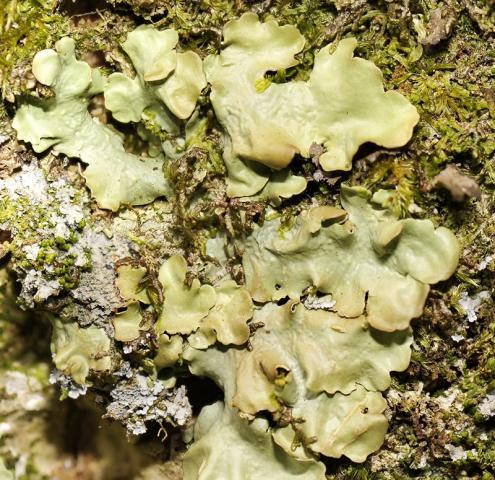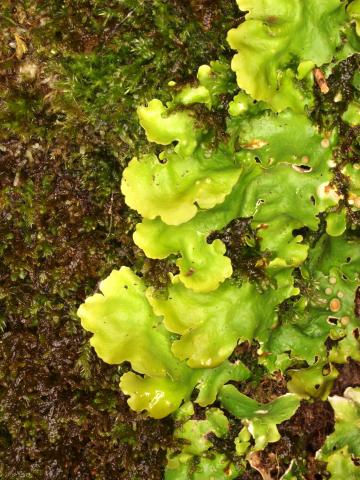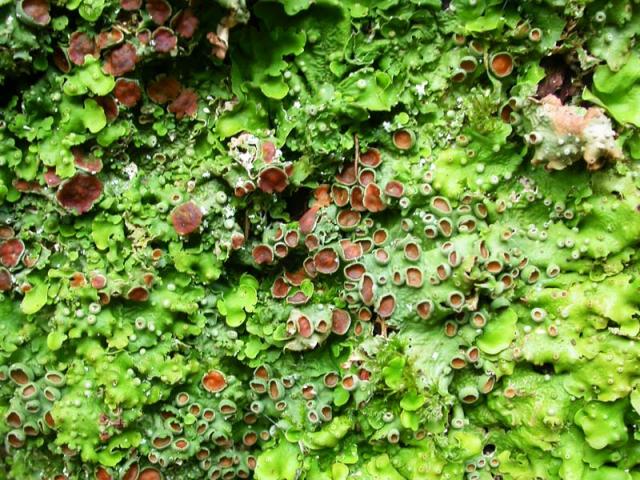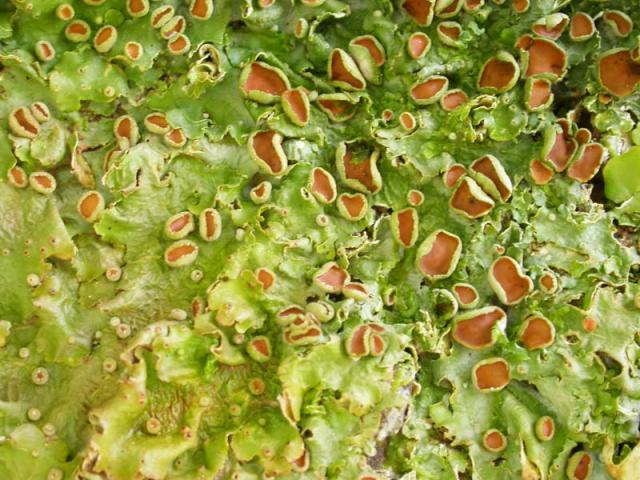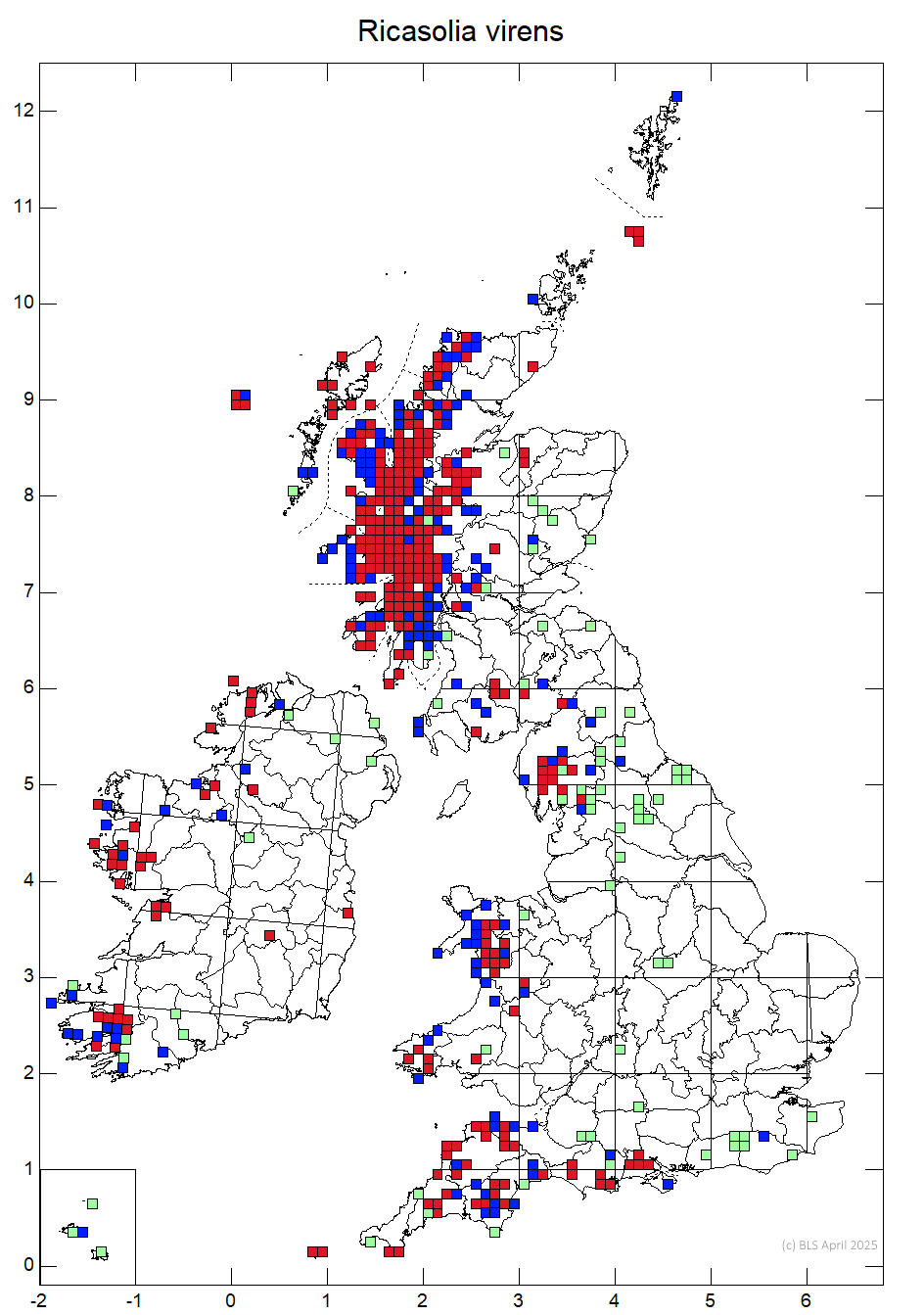A large, foliose lichen of shady sites in old woodlands, dull grey or yellow-green when dry but bright grass-green when wet.
Large, to 10cm diameter, with a thallus of closely adpressed, thin, rosette forming lobes. The upper surface is a dull grey-green ro grey-brown colour when dry, with a smooth, almost oily appearance, but bright green when wet. The lower surface is almost white with a fine, brown tomentum. Thallus lobes are short, narrow and unridged (like a "Parmelia"), 3-10mm wide. The inner lobes are incised and contorted, the marginal lobes rounded at the apices and smooth. There are no soralia or isidia, but occasionally few to numerous marginal folioles.
Apothecia are usually abundant, and when young appear as volcano-like swellings which open out to expose the brown disc with a warted margin. The spores are colourless, becoming brown when mature, persistently 1-septate, 25-45 x 8-11 μm.
Spot reactions negative but sometimes K+ faint yellow and KC+ faint pink. Contains scrobiculin.
On broad-leaved trees, especially oak, ash, sycamore, hazel, elm and beech. Mostly confined to ancient woodlands and parklands, occasionally on sheltered rocks in woods and on western sea-cliffs. This is the most oceanic and shade tolerant of the British Lobaria species.
An important member of the Lobarion, particularly in more shaded, sheltered sites where it occurs with Lobaria pulmonaria, Sticta spp and Nephroma spp.

Locally common in the southwest of England (Cornwall, Devon, Somerset and Dorset) and in the New Forest, but now extinct from former sites in Sussex. In northern England still present at two sites in Cumbria and one in Northumberland. Still locally common in western Scotland and the far west of Ireland.
Worldwide it is only known from western Europe and Macronesia. It is very local and more oceanic than the other Lobaria species, and is now rarely found east of the Loire and French Pyrenees. There are no recent reports from central Europe.
Species of Lobaria have shown a general decline in the last 100 years or so which can be attributed to a number of factors,including the loss of the veteran trees on which they are mostly found. They are also sensitive to atmospheric pollution, particularly SO2 (which acidifies their bark substrate) and agricultural chemicals, and changing landuse and woodland practices, particularly heavy thinning, have led to drying of the woodland environment. Conservation of the mature tree stands in which this species occurs is important.
Rose, F. & Coppins, B.J. (1998) Lobaria virens, species account in the Lichen Atlas of the British Isles. British Lichen Society, London.
Wolseley, P. & James. P. (2000). Factors affecting changes in species of Lobaria in sites across Britain 1986–1998. For. Snow Landsc. Res. 75, 3: 319–338
